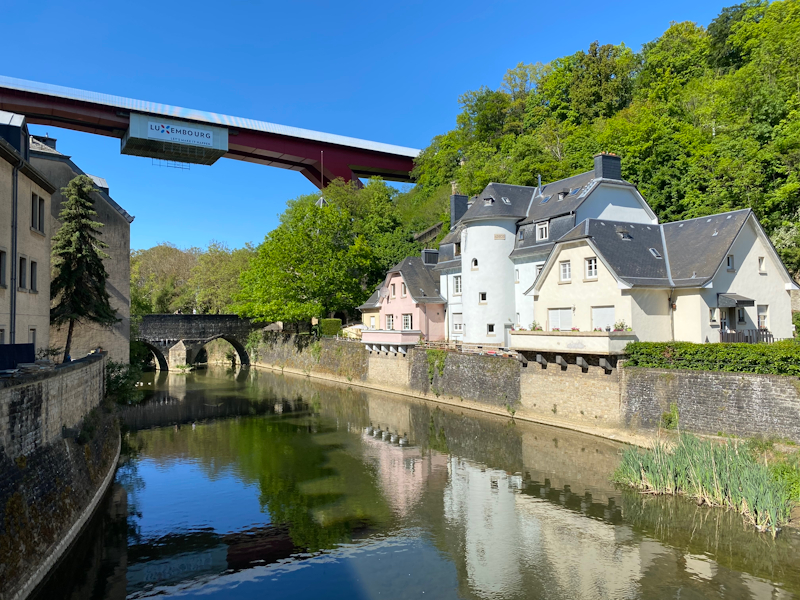Mobile Flagship Phone Camera Overview 2020 H1: Still Picture Battle
by Andrei Frumusanu on June 18, 2020 11:00 AM ESTUltra-Wide-Angles: Wide, or Macro?
Ultra-wide-angles have become extremely popular in recent years and are a must-have for any smartphone as it opens up new capturing experiences in scenarios that previously just weren’t possible. The key points here is the viewing angle that the camera module achieves as well as the resolution of the sensor. Processing is also very important of course and that’s probably where we’ll see most differences from the various vendors.
Also, maybe unbeknownst to many, ultra-wide-angle can also serve as excellent macro unit as long as the manufacturer actually employs an auto-focus mechanism on the optics of the module; unfortunately, a lot of ultra-wide-angles are fixed focus.

[ iPhone 11 Pro ] - [ iPhone SE ]
[ Galaxy S20U(S) ]
[ Galaxy S20+(E) ]
[ OnePlus 8 ] - [ OnePlus 8 Pro ]
[ V60 ] - [ Mi 10 Pro ]
[ P40 Pro ]
[ Reno3 Pro 5G ] - [ Reno3 Pro ]
[ X-T30 ]
The widest ultra-wides are employed by Apple and Samsung which both have around 120° field-of-view, corresponding to an about 13-14mm equivalent focal length, while the remaining phones range from 15-18mm.
A lot of the phones do adequate jobs in terms of exposure, but my two favourites are the S20+ and the OnePlus 8 Pro, both which achieve a better dynamic range and HDR handling of the shadows.
It’s weird to see the processing differences to the S20 Ultra here as it’s the same camera module but on a different chipset, the Exynos S20+ is better in the HDR.
In practice at the default resolutions the Mate 30 Pro and P40 Pro have the best sharpness but that’s just because it’s a bigger sensor that also has to cover a smaller 3:2 aspect ratio field of view. Huawei doesn’t make it easy to use the 40MP mode of these sensors so it’s a hassle to switch to them, it’s a practically unusable feature in every-day photography.
The OnePlus 8 Pro is the only other phone with a high resolution ultra-wide-angle. The 48MP picture certainly gives a lot more detail than the default 12MP, but it loses out a bit in dynamic range. The optics here really can’t keep up with the sensor as we see quite a lot of chromatic aberrations throughout the scene, but frankly that’s to be expected at this focal range and FoV.

[ iPhone 11 Pro ] - [ iPhone SE ] - [ Pixel 4 ]
[ Galaxy S20U(S) ] - [ Galaxy S20+(E) ]
[ OnePlus 8 ] - [ OnePlus 8 Pro ]
[ V60 ] - [ Mi 10 Pro ]
[ Mate 30 Pro ] - [ P40 Pro ]
[ Reno3 Pro 5G ] - [ Reno3 Pro ]
[ X-T30 ]
This next scene is a bit harder with dynamic range as we’re having bright sun-lit elements as well as dark elements in the shadows. It’s the OnePlus 8 Pro which provides the best exposure and natural look. In the 48MP mode I think the 8Pro actually does even bit better as it doesn’t flatten out the highlights as much on the building. The regular OP8 loses out in depth in the highlights and mid-tones and look flatter.
In this regard, the S20+ does better than the S20 Ultra and the iPhone 11 Pro as well, although the white building façade is blown out. The iPhone tries to compensate for this but ends up looking flat.
The V60 and Mi 10 Pro sensors here are also probably near their limits as they opted to blow out the white façade in order to keep more dynamic range in the rest of the image – a good choice as it’s still a good overall picture.
Huawei’s processing on the P40 Pro seem tamer than on the Mate 30 Pro so while it looks natural, it could have been a bit brighter in the exposure.
Just quickly switching over to the main high-resolution shots we again see the squiggles in the bridge barrier alongside rainbow Moiré in a lot of the phones. This time around it’s also slightly prevalent on the Mi 10 Pro and Reno3 Pro with Samsung sensors so it seems those sensors aren’t completely immune to it.

[ iPhone 11 Pro ] - [ iPhone SE ] - [ Pixel 4 ]
[ Galaxy S20U(S) ] - [ Galaxy S20+(E) ]
[ OnePlus 8 ] - [ OnePlus 8 Pro ]
[ V60 ] - [ Mi 10 Pro ]
[ Mate 30 Pro ] - [ P40 Pro ]
[ Reno3 Pro 5G ] - [ Reno3 Pro ] - [ X-T30 ]
Macro photography isn’t normally something we test out in our reviews but it’s something I just wanted to quickly go over in this piece. Macro means that you have a high reproduction factor of an object across the camera’s sensor; a real macro camera generally is considered that an object of a certain physical size actually covers the same size across the sensor. You can achieve this in two ways, you either have long focal range to zoom in onto the object, or you move the camera closer to the object in which case the focus mechanism needs to be able to actually focus that close.
Most smartphones today have either one or the other option with their cameras, usually with their telephoto module or the ultra-wide-angle. There are also some cheaper phones out there with dedicated macro module but generally they’re all useless in terms of quality.
These shots of these caterpillars aren’t really apples-to-apples comparisons but rather just a showcase of the best-effort in terms of getting as close as possible to the subjects.
The default shot here is actually from the Reno3 Pro. Both phones have auto-focus UWA modules so you’re really able to hold up the phone extremely close to the subject and still have it in focus. This gives a quite great result in terms of magnification.
A lot of the phones with 2x modules weren’t really able to focus as close so that’s why generally I skipped those pictures are they’re just not useable, and you’re better off trying to focus with the main module.
It’s the higher magnification telephoto modules which do the best and that includes the S20 Ultra, the P40 Pro and the Mi 10 Pro, although none of them are quite as sharp as the Reno3’s UWA at the focal plane.

[ iPhone 11 Pro ] - [ iPhone SE ] - [ Pixel 4 ]
[ Galaxy S20U(S) ] - [ Galaxy S20+(E) ]
[ OnePlus 8 ] - [ OnePlus 8 Pro ]
[ V60 ] - [ Mi 10 Pro ]
[ Mate 30 Pro ] - [ P40 Pro ]
[ Reno3 Pro 5G ] - [ Reno3 Pro ] - [ X-T30 ]
Sometimes you can’t actually get as close to the subject. Although the Reno3 phones have excellent macro shots of the centre of the flower I actually have to get as close to it that it bends one of the petals, which just doesn’t look as good for the shot.
The iPhone’s 2x telephoto actually does a real good job here in getting a good composition. The other phones have to sit back a bit further to focus properly. Oddly enough I got better shots with the regular OnePlus 8 rather than the 8 Pro here.
The S20 Ultra appears to get great magnification at the 4x zoom level but under closer inspection this is actually misleading as the phone actually took this with the main camera rather than the telephoto module, resulting in a blurry magnified shot.
The P40 Pro has the best real magnification amongst all the phones. I guess the narrow aperture of this module also helps it not have a quite as thin focal plane, I had to stop down to f/14 on the Fuji to get something that was similar.
Overall Ultra-Wide-Angle
In general, the first step to having a good ultra-wide-angle is actually having one, so the Pixel 4 eliminates itself from the competition here. The second step is considering the field of view of the UWA. Apple and Samsung have the widest views amongst all other vendors out there and this regard I do find them to be the most “fun” with their cameras.
Quality-wise, things vary quite a bit depending on what the processing ends up deciding to do. I found the S20 phones probably the most consistent on what they’re doing and they handle dynamic range the best in terms of the different scenarios whereas some of the other phones might end up producing flatter images, even when sometimes they aren’t quite as sharp. The OnePlus 8 Pro’s camera certainly is the sharpest amongst the UWA’s, and sometimes it even produces the best exposures, but it’s far less consistent.
LG, Xiaomi’s UWA’s are a bit hit and miss. They can be excellent, but sometimes the exposures and tones are more off than others.
Huawei’s modules are also technically great, but their reduced field-of-view take away a bit of the experience of an ultra-wide. In general, you can’t go too wrong with either Apple, Samsung or the OnePlus 8 Pro in terms of fun ultra-wide photography.










130 Comments
View All Comments
StormyParis - Thursday, June 18, 2020 - link
Also, something popular for some Chinese phones is to use a gCam port instead of the native app. Your mileage will vary.brucethemoose - Thursday, June 18, 2020 - link
Indeed, but its something a very small percent of buyers (or Anandtech readers) would be interested it. Finding and debugging the right modded gcam build for your phone is technical and time consuming.ingwe - Thursday, June 18, 2020 - link
Incredible article and sooooo much work went into this. Thanks for producing really great content like this!tkSteveFOX - Thursday, June 18, 2020 - link
A true comparison between some of the most sought camera phones these days.The MTK Reno 3 uses an IMX686 while the Reno 3 Pro uses the older 586 but has OIS.
The difference is largely from the sensor, not so much from the MTK 1000 inside.
Overall, Apple and Huawei are the top camera phones with Apple unbeatable in Video recording while Huawei are masters of stills (especially indoor ones)
Peskarik - Thursday, June 18, 2020 - link
So, which phone camera is the best? The Conclusion is without conclusion! Are you afraid to have an opinion? HAVE AN OPINION, put it in the conclusion!Retycint - Friday, June 19, 2020 - link
I think the conclusion is that there's no true best, because everyone falls down in one way or another. Although I do agree that there could be a short summary section that lists the conclusion in point formKangal - Friday, June 19, 2020 - link
Agreed."Best" kind of depends on your interpretation. Is it Video? (review upcoming). Is it Daytime shots? Low-light shots? Ultrawide shots? Zoom shots?
Well, to be fair most shots are done in good lighting situations on a subject that is close. And they're done fairly quickly on Auto Mode. Basically, it has killed the segment of the point'n'shoot cameras. Trying to do any of the other tasks are actually more difficult for obvious reasons, which is why DSLR/Mirrorless will continue to be around for more serious photographers.
However, if you were careful and read the entire thing, you can read between the lines as to what Andrei (and basically Anandtech, and all the proper professionals) stand-point is on this subject. And it is that an "overall best" is mostly about getting good shots consistently, and that the phone should be able to take a good shot instantly and automatically. As alluded to above, it is not to replace your DSLR but your point'n'shoot. That means, although the best photos taken today is done through the LG V60 and the Sony Mk.II, those two can only achieve such breathtaking shots by playing with Manual Mode for a couple minutes for that single shot, then taking the RAW Image to then compile on a Pro Software of your choosing. That's not point'n'shoot methodology at all.
With that all said and done, which phone truly had the best overall camera?
It was the Apple iPhone 11 Pro. It produced good shots consistently, and quickly, on Auto mode. As much as I hate to admit it, they've stepped things up with the iPhone Xr and on, so I need to give credit where credit is due. Not to mention they are unrivalled when it comes to video, going back as far as the iPhone 5S.
In the future, when Apple gets a little more serious with the sensor size, and zoom optics, it can compete in those heavier niche fields. Or maybe by that time, Huawei might improve their software/algorithms. Or Google might fire their Pixel division and employ more competent people. Or you know hell will freeze over.
PS: I forgot to mention that if you're not buying the "Manual Mode" excuse for the iPhone, well, there are actual high-quality accessories you can buy for the iPhone to get a stronger optical zoom, or wider view, or a Macro lens... or go bananas with a fish-eye/360' lens.
TheGodFatherOfAnons - Thursday, June 18, 2020 - link
As @StormyParis said here, I would also love a similar comparison between the midrangers below $350 (Pixel 3A, P30 Lite (GMS), P40 Lite (non GMS), Samsung A51, Xiaomis and Realmes without and with Arnova or BSG GCam et al).It helps that you put iPhone SE2 already here, so it can be a true midrange comparison for all the $200-300 phone buyers.
u/andreif, you are a good man, <3 from India
Lilja - Thursday, June 18, 2020 - link
I've always been slightly puzzled why these reviews of phone cameras seem to never be concerned with RAW photos, but only the JPGs produced built-in software. I shoot almost everything on my phone in RAW and develop it later in Lightroom (on the phone as well). This gives me ridiculous advantage in image quality compared to what the manufacturer's software does, save for maybe ultra low light situations, which hardly ever produce anything usable anyway. Sure I'm now the only one who does this?So, I'm wondering which of these cameras would actually be the best suited for RAW shooting. Especially since you included a reference Fujifilm camera now (great idea by the way!) and are shooting in RAW using it, would be both interesting and valuable to see how the phone sensors as well as optics go against a dedicated semi-professional camera when both are used in an optimal way. Is there any chance we might see such an experiment in the future? Nobody seems to be doing this, and oblique DXO Mark sensor scores don't quite cut it.
The article, for what is is though, is excellent =)
BedfordTim - Thursday, June 18, 2020 - link
I would agree if only for curiosity value.